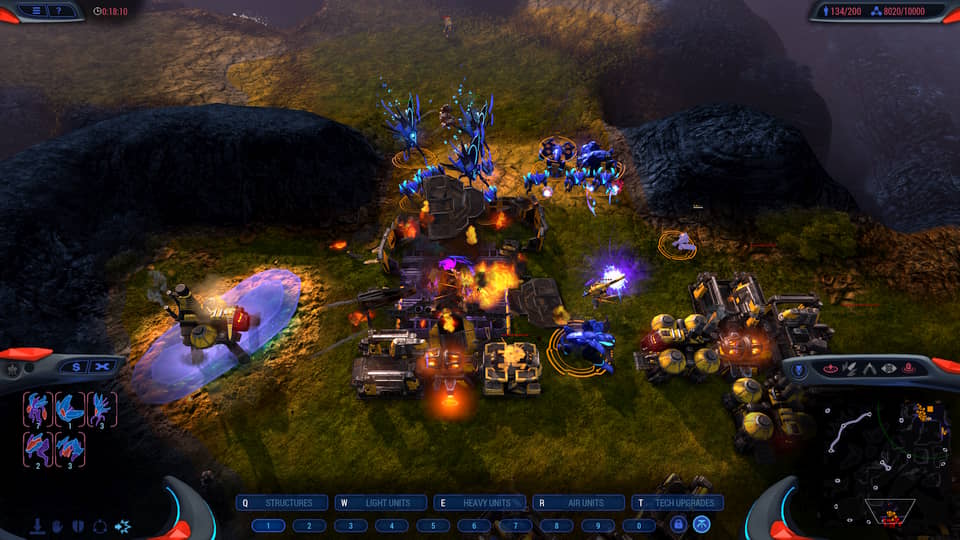Grey Goo
Grey Goo is a real time strategy game that sneaked out in 2015 from Petroglyph. I hadn't heard of them, so I looked those guys up. Former Westwood Studios people that needed somewhere to go after EA shut them down, so they founded Petroglyph. I haven't played any of the Red Alert series, so I can't tell if this is a spiritual successor.

There are four factions, and each of them feel dramatically different. To humanity, war is something that's only seen in history books. Their bases are built by running energy conduits and nodes from a central core. The Beta are an alien species that aren't native to this world, and have been living in the scraps of their crashed ships for two generations. They have the scrapyard aesthetic of StarCraft's Terrans, and their bases are likewise, with standalone structures and attached modules. The Goo are colonies of gazillions of microscopic nanites. They don't have buildings, as their units split from a larger pool. The Shroud are yet another alien faction, but the game doesn't detail what their deal is. It's mentioned that humanity noticed a quiet universe because of them, the Beta are running from them, and the Goo are preparing for them.
Gameplay is straight up real time strategy. The only resource is a material called "catalyst" that dissolves in hot springs, which gets collected and refined. Base management varies wildly depending on the faction. The Beta have hubs of varying size with attached modules, similar to how bases in Halo Wars work. They can build walls with nodes that units can jump on. Humans have a headquarters, from which conduits branch out from, and buildings attach to them. This is a disadvantage on maps that are full of cliffs, as conduits can't go up or down them, and you can't have another HQ. Humans can build walls, but can't place units on them, but can build turret structures. The Shroud can build anywhere, but building functionality improves with nearby power structures that can double as turrets. The Goo don't have permanent structures, opting for several large blobs that can roam the landscape.
The campaign lets you have fun with the play styles of the first three factions. Story and lore comes in bite-sized chunks that don't dump too much on you at one time. The story is simplistic, but heartwarming. I love how you start off playing the Beta, and you discover these shiny white machines, then go on to find humans. (Bioware, take note.) A cease-fire is brokered (thanks to a robot that has figured out the Beta's language), letting both focus on the Goo. After winning, you play as the Goo, where you re-assemble yourself. The campaign is short, though missions can be frustrating at times.

Each faction has an 'epic' unit that is very powerful. They are analogous to Supreme Commander's experimentals. Since the factions differ, their production differs. Sometimes built in a factory, sometimes upgrading a unit, sometimes upgrading a building. You are practically limited to one (though you can field two if you build almost nothing else), although it is quite powerful and can turn the battle to your favor. Unfortunately, your enemies sometimes have one. Each. Oops.
Grey Goo has Steam workshop support. The workshop is limited to custom maps. The map editor is accessible through the Extras menu.
I like that this game intelligently flips the sci-fi script. Usually it's the humans that are the scrappy space upstarts that look like they came straight out of a junkyard, but that's an alien faction here. Instead, humanity built the bright, shiny utopia maintained by AIs and robots. The insectoid bug faction isn't biological at all. The story doesn't explain the nature of the Shroud, though.
I like Grey Goo and I want to love it, but perhaps through my repetitive play style, I don't think it has much depth.